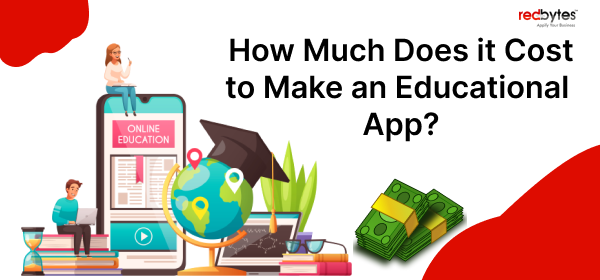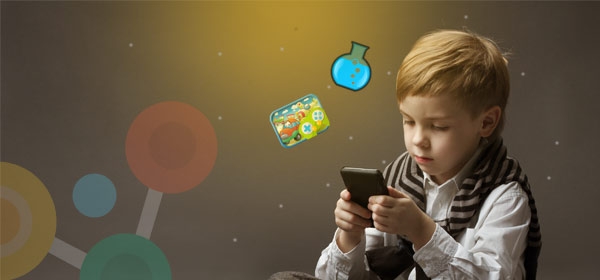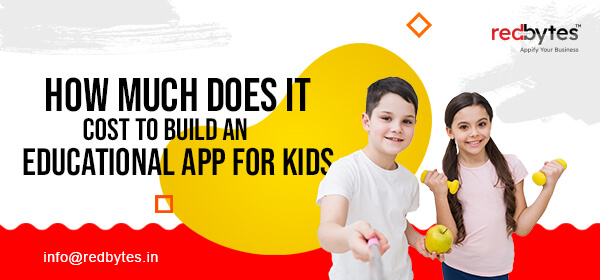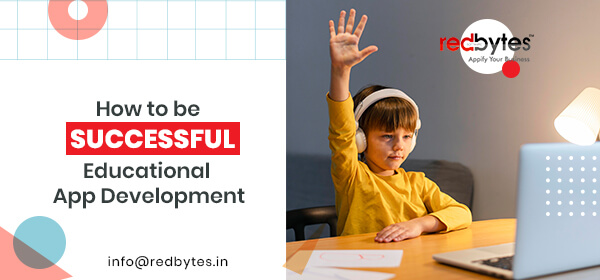Nowadays, cutting-edge technology enables mobile applications, allowing people to access digital education at their fingertips. An educational app functions as a virtual link between students and teachers. The increasing trend and need for e-learning drive educational institutions to develop educational applications for a wide range of courses. Without a doubt, the recent trend of educational app access makes institutions and businesses aware of the potential for business expansion.
Development Cost of Educational App
There are numerous factors involved that strongly influence the cost of developing educational apps. Therefore, whenever you begin your cost calculator, you must evaluate the important features, such as the choice of an os, schedule of activities, specified functionalities, and so forth. The requirements and the current online learning trends also decide the educational app development cost. The cost is also decided by the developer efficiency you require for your project. In this scenario, you may enlist the help of a skilled team to satisfy your needs precisely, or you can hire independent freelancers. A high-quality educational application will cost you between $12,000 to $45,000, based on conservative estimates of essential and must-have features. The per-hour cost in India ranges from $15 to $40.
Considerable Cost Of Educational App
Market experts believe that you should constantly consider a more effective strategy to support the technological needs of educational app development. You may choose between a native app and a cross-platform app here.
If you consider developing a native educational app, then it will only run on either the Android platform or the iOS platform. Furthermore, in order to fulfill the most updated consumer needs, the native app development procedure constantly necessitates a significant investment. Moreover, in order to accomplish all separate phases of native application development, you need to consider some factors in mind. They are as follows:
- Higher Pricing
- Prerequisites for a highly skilled developer
- Developers with a high level of efficiency
If you consider developing a cross-platform educational app, you may do it at a reasonable cost. Also, there are a few quality-based cost factors for the key phases of cross-platform app development. The factors are listed below:
- limited scope for implementing smooth features like animation and graphics.
- low cost project.
Read Also: How Much Does It Cost to Develop an App Like Netflix?
So you have to decide between native app and cross-platform app according to your preference. Do consider the customised and integration-oriented clean exposure of a native app as you first choice if you have problems choosing one. Though it demands a significant investment but it also fulfills a wide range of requirements.
However, when deciding on a technology stack for your educational app development, you should always solicit credible suggestions from experts in the field. The type of tools and technologies that should be employed by the development team to bring you a fully functioning app primarily determined by the specific pattern of services and facilities provided by your institutions. So, before using your cost calculator for your educational app project, be prepared to discuss about it with the professionals.
Factors Influencing the Cost of Educational App Development
1) Platform for App: It is important to consider the platform on which you are developing an application. Is it iOS or Android? Each platform carries its own development complexities that require varying levels of effort and experience. In compared to Android platforms, iOS platforms are less expensive. The development costs for android applications are actually higher.
iOS applications reach financially secure people. It is important to keep in mind that Android has a greater market share than iOS. This means you can make a lot of money from it. The operating system selection will totally depend on the purpose of your application. This will play a big role in determining the cost of building your application.
2) App’s Features and Functionality: It is important to decide what features and functionalities your application will have, because the number of features and functionalities will have a significant effect on cost. The more functionalities your application has, the greater the cost will be. Therefore, you must differentiate between the main and secondary functions of your application.
3) Points of Integration: There are a couple of ways of building an app. You can either develop it as a stand-alone or integrate it within an enterprise system. Developing an app for internal users is less expensive, since you have total control over the devices and platforms supported. Integration points will cost you more money to build, but they’ll pay off in the long run.
4) Advanced Animation/Visual Effects: Your app may cost more if your app will consist of visual animations or other sort of interactive animation. When your app is designed with simple functionalities, it might not cost much. Visual effects make your app attractive and engaging. Complex animations conveying the actual concept of your app is necessary. Consider how to invoke some animations and make them cost-effective.
5) Maintenance and Support: After your application is launched, maintenance and support is very important. It requires a considerable amount of money to keep your app up-to-date and to fix any issues users may encounter.
6) Location of the Developer: The geographical location of a developer or development team also have an impact on the cost of an educational app development.
• In Eastern Europe it can vary from $80 to $190USD
• In the US and Canada, it can vary from $90 to $260 USD
• In India it vary from $15 to $60 USD
• In the United Kingdom it can vary from $80 to $190 USD
• In the Australia it can vary from $110 to $160 USD
Read Also: How Much Does It Cost To Develop An App Like eBay
How can you get developed your Education App
Hire freelancers: Hiring freelancers is less expensive than alternative engagement strategies. As a consequence, it’s a good alternative if you’re looking to save money or build a simple application. However, the recruiting process may be difficult in and of itself. Furthermore, working with freelancers is tough owing to communication issues and geographical differences. Furthermore, this approach may not always provide a high-quality end result.
Outsource your app development: Outsourcing your project to a reputable business appears to be the most cost-effective and dependable method of developing an application. After all, they have teams of skilled developers, UX/UI designers, and testers that can produce high-quality software in accordance with your company objectives. However, selecting the correct agency for a full project might be difficult. Your disengagement from the creative process and other procedures might lead to unexpected results.
Hire a dedicated development team: When designing a complicated application, a specialized development team approach works well. In this approach, app development businesses supply their clients with a team of developers and designers that collaborate as an extended team to build excellent software using their expertise while adhering to their clients’ work culture, processes, and best practices. This strategy guarantees that project requirements are communicated to clients in a smooth manner. It also sticks to a continuous development approach, which facilitates progress tracking and accountability.
Make Money From Your Educational App
1) Freemium:
A freemium approach allows customers to utilize an educational app for free for a short period. Following that, users must pay a monthly or yearly membership. The app can be segmented into two sections: the free version and the premium version. From the free version, you can take advantage of orientation modules and pilot components, but the premium version contains advanced tutorials with more elaborated content.
It is best to give a trial version of the educational app to the users. This is because they can try out the app and learn more about it. Once they learn more and feel good using the app, they can go for the premium features that is being offered.
2) Advertisements:
With the help of the advertisements, you can make money through the educational app. Most educational related businesses nowadays go for advertisements to grow their business. Therefore, one of the best place to put an advertisement is an educational app.
This is achievable with the assistance of affiliate marketing. Popup advertising show on the app’s screen constantly. Indeed, it is essential to assure that advertisements do not constantly display well before user’s eyes. Put advertisements based on the goods that the app user would be interested in for the best advertisements. And, as time passes, adverts will enhance user reach, allowing for a bigger profit.
3) In-App Purchases:
This strategy allows users to access the majority of educational app features for free. But, expanded amenities with added value might be provided at an additional fee. A language learning app is a great example of in-app purchases.
4) Subscription Fees:
If you want to monetize an educational app, you can provide free access to many things. You can give free access to the courses, lectures, and much more. In return, the user will pay a subscription fee that can be monthly or annually. Based on the users, you can set some courses available for them under a subscription. You can decide the best plan that suits them.
5) Course Fees:
Educational apps can be used as a platform to sell popular and copyright courses, and it is common practice to charge for courses. There are free workshops and webinars that can be held to attract more audiences for a particular course. Moreover, the prices can be raised for these courses after a while. This will happen only if the demand for the courses is high.
There is an average price for the courses and it is important to search for an adequate price. You can search according to the demand of the courses. It is impractical to change the pricing policy so keep that in mind. You will have to follow a product strategy when you are thinking about the price.
The price can be increased for premium access, but if broad coverage is desired, the course fee should be maintained as low as possible. Monetizing an educational app by collecting course fees necessitates regular assessment of its worth. As a result, while determining course costs, extra attention should be given.
Read Also: How Much Does It Cost To Develop An App Like Mint


![Why Teachers are Important for Educational App Development [12 Reasons]](https://wp.redbytes.in/wp-content/uploads/2017/10/12-Reasons-Teachers-are-Important-for-Educational-App-Development-1.jpg)






